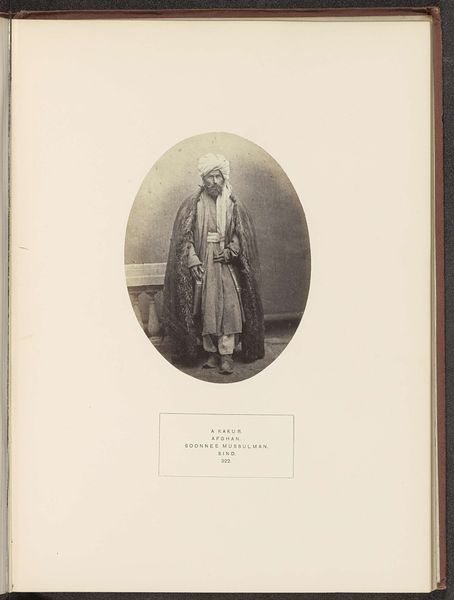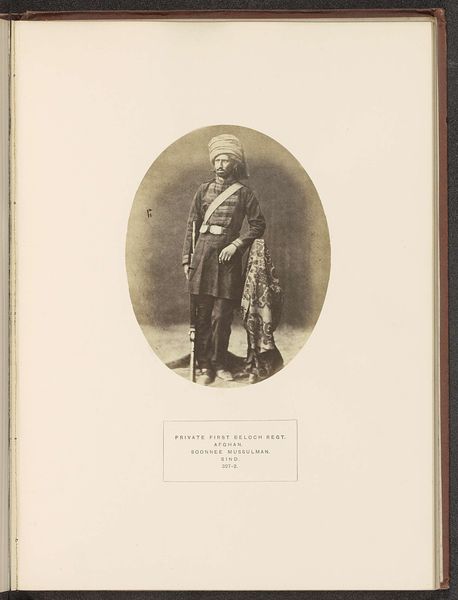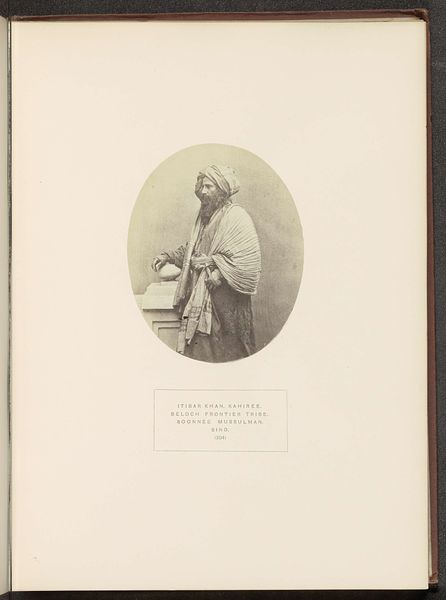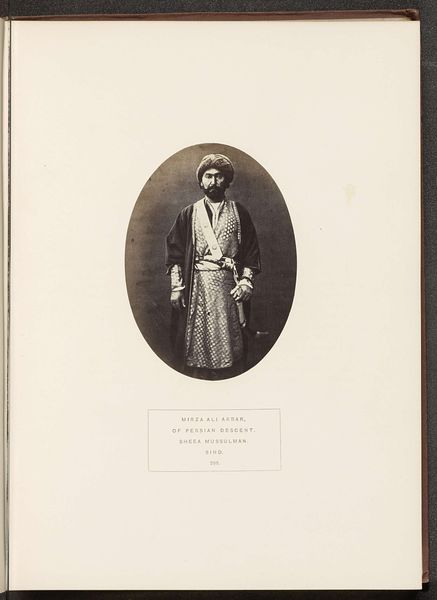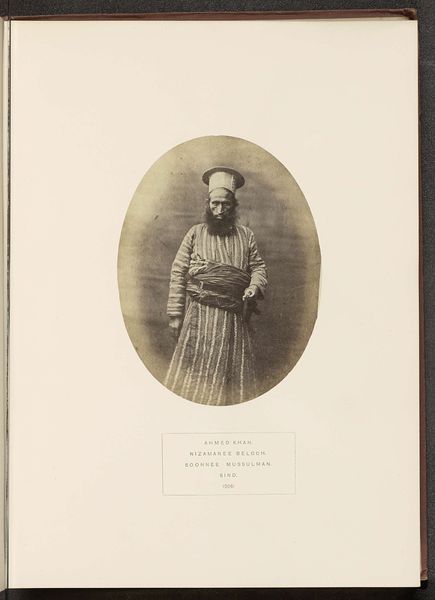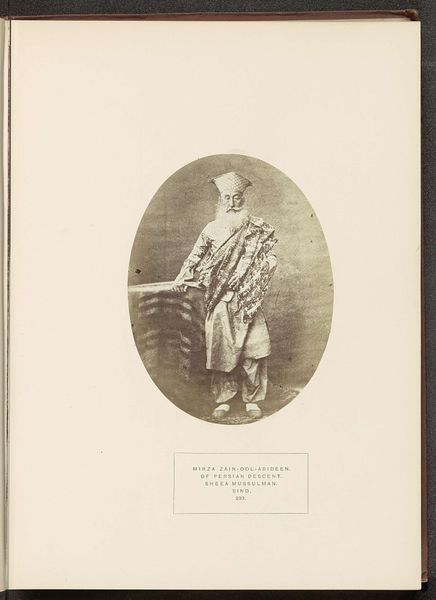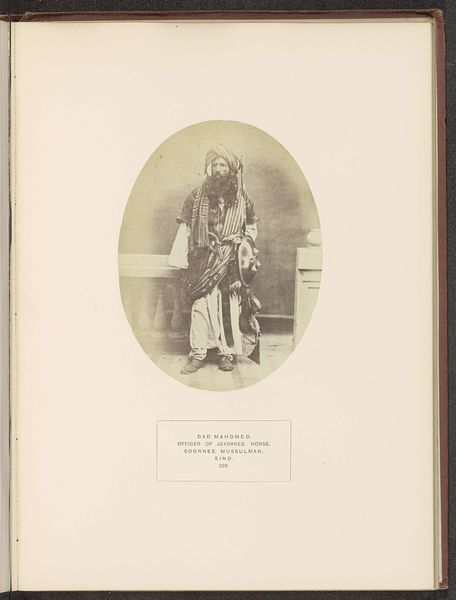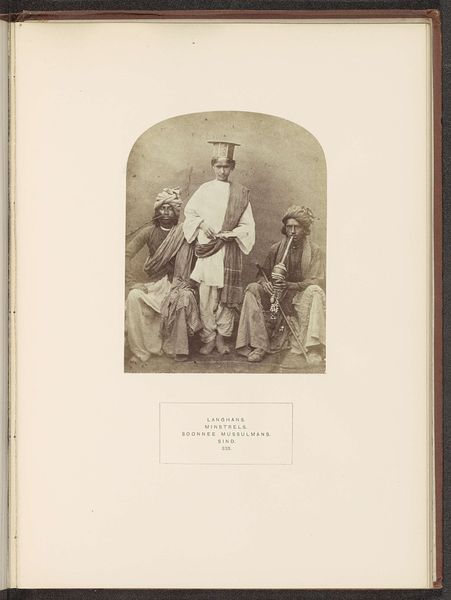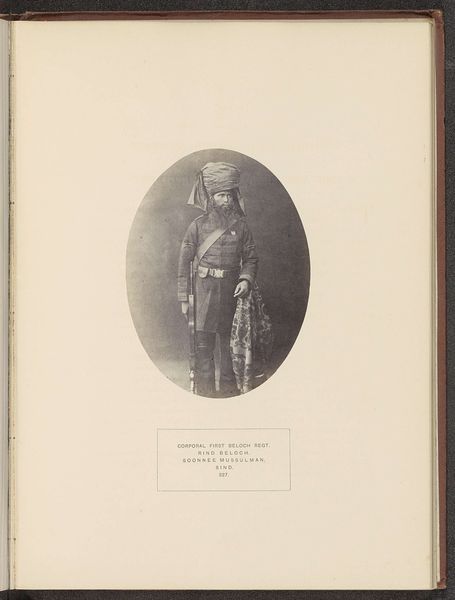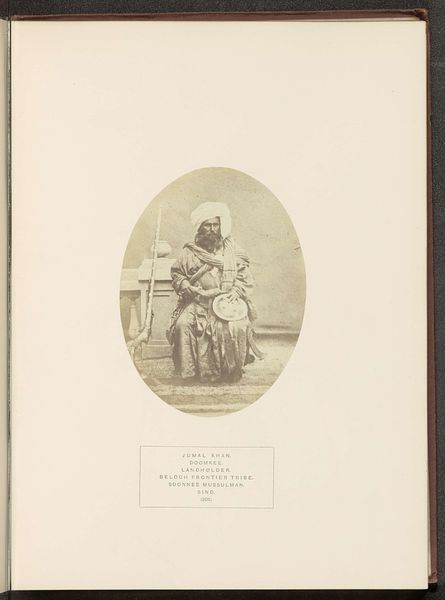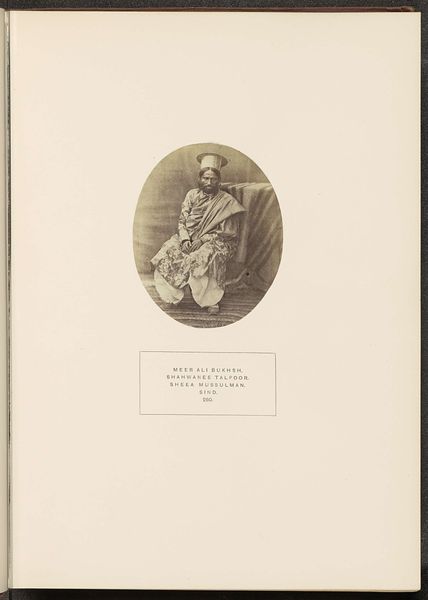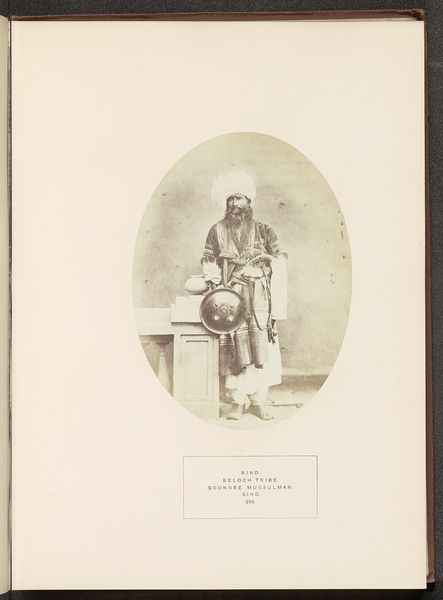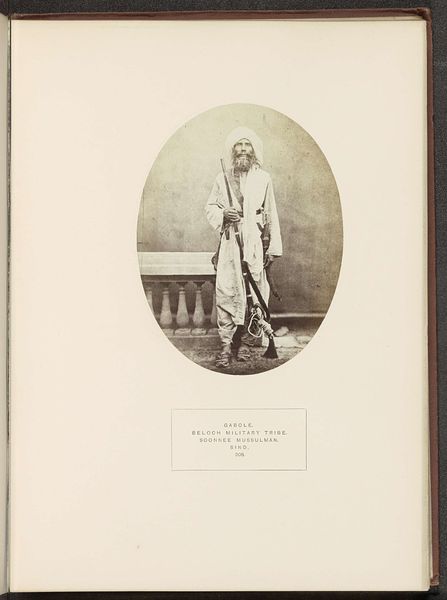
Portret van Sirdar Khan met een musket en een sabel before 1872
0:00
0:00
photography, gelatin-silver-print
#
photography
#
orientalism
#
gelatin-silver-print
#
realism
Dimensions: height 158 mm, width 120 mm
Copyright: Rijks Museum: Open Domain
Curator: What strikes you first about this dignified portrait? It's identified as "Portret van Sirdar Khan met een musket en een sabel," created before 1872, captured through the lens of Henry Charles Baskerville Tanner using gelatin-silver print photography. Editor: It's the light, undeniably. That sepia tonality lends a solemn air. But the figure himself, so meticulously detailed against that hazy background, carries the photograph's weight. Look at how his garments fall, how deliberately he presents himself with those weapons. Curator: The materials depicted, especially in the ornate details of the weapons, point towards a narrative deeply entrenched in class and production. Considering this falls into Orientalist art, what message do you think Tanner wanted to show? Was it about showcasing opulence or was there more? Editor: It's all about form, isn’t it? Consider the contrast. A close-up against indistinct light, an adorned individual portrayed by this cutting-edge yet laborious means of photography. To decode this semiotically, we are encountering wealth captured within limits—a structured play of presence against absence. Curator: Tanner wasn’t merely documenting; he was part of a colonial apparatus whose product and labor exoticized people for profit. Look at how the details, down to the musket’s design, speaks volumes about resources and possibly extracted craftsmanship within that frame. Editor: Yet, isn't this also where beauty arises? The stark detail allows our mind to perceive that we are viewing a portrait made from the era. By using gelatin print—with all its inherent characteristics—that is both aesthetically profound but it serves a function too. Curator: To remove focus from how Tanner participated in larger imperial production would only strip this piece of its real, historical worth. The photographic choices here helped re-construct identity within colonial dynamics—not separate from them. Editor: Fair enough. Viewed from material terms, a work embodies colonial era that shows how that era valued power—the gelatin and process are byproducts and materials used as that aim. A complex interplay of form and raw exploitation. A challenging image indeed.
Comments
No comments
Be the first to comment and join the conversation on the ultimate creative platform.

